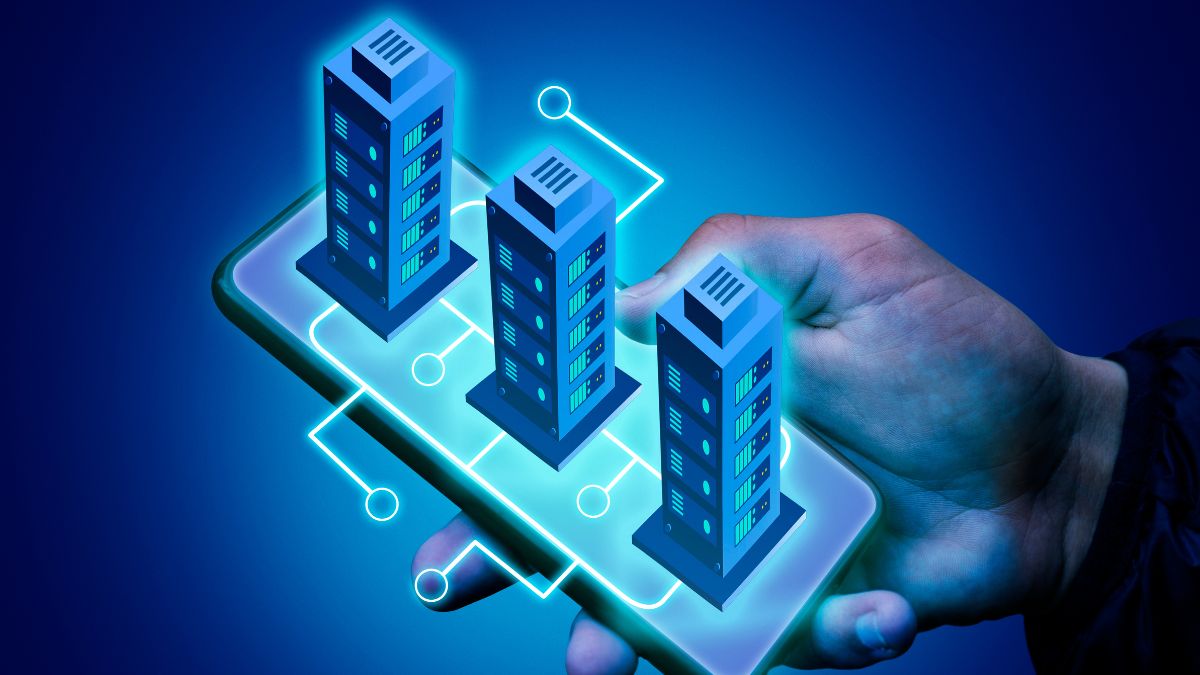REAL ESTATE
The Ultimate Guide to Maximizing ROI at Multifamily Mindset Events?

Are you ready to take your real estate investing to the next level? Multifamily mindset events could be the key to unlocking greater property management and investment success. These gatherings offer invaluable opportunities for networking, learning, and growth. But how can you ensure you’re making the most of these events and maximizing your return on investment (ROI)? This comprehensive guide will explore everything you need to know to make the most out of multifamily mindset events. From setting clear goals, researching speakers, actively participating in sessions, and implementing new strategies, you’ll discover actionable tips to elevate your multifamily real estate endeavors.
Understanding Multifamily Mindset Events
Understanding Multifamily Mindset events is like stepping into the heart of the multifamily real estate world. These gatherings are carefully put together to give you a mix of learning, motivation, and connection. Imagine yourself in lively discussions, hands-on workshops, and inspiring talks—all focused on the ups and downs of managing and investing in multifamily properties.
But it’s more than just learning; it’s about making real connections with people who share your excitement and goals. Multifamily Mindset events are like idea hubs where you can swap stories, come up with solutions, and maybe even find partners to join you on your real estate journey.
So, jump in with an open mind and a sense of adventure, and get ready to feel inspired, challenged, and ready to take on new opportunities at Multifamily Mindset events.
Why Attend Multifamily Mindset Events?
Attending Multifamily Mindset events isn’t just about showing up; it’s about seizing incredible opportunities that can transform your real estate journey. Imagine stepping into a space buzzing with fellow enthusiasts, seasoned experts, and potential partners. It’s a chance to expand your circle, soak up wisdom, and ignite your passion for property management and investment.
These events are like treasure troves of knowledge and inspiration. You’ll hear stories of triumph, learn about cutting-edge strategies, and discover innovative approaches that could reshape your approach to multi family real estate. Plus, rubbing elbows with industry leaders and fellow investors opens doors to new collaborations and deals you might never find elsewhere.
So, why attend Multifamily Mindset events? They’re not just gatherings but catalysts for growth, connection, and success in the dynamic world of multifamily real estate.
Preparing for Success
Maximizing ROI at multifamily mindset events starts with thorough preparation:
Set Clear Goals:
Define what you hope to achieve from attending the event. Whether expanding your network, learning new strategies, or finding potential investment opportunities, having clear goals will guide your actions.Research Speakers and Topics:
In advance, familiarize yourself with the speakers, panel topics, and workshop sessions. Identify sessions that align with your interests and goals.Bring Plenty of Business Cards:
Networking is a crucial aspect of these events. Be sure to bring an ample supply of business cards to exchange contact information with fellow attendees.
Strategies for Maximizing ROI
Now, let’s delve into actionable strategies for maximizing your ROI at multifamily mindset events:
Actively Participate in Networking Sessions:
Don’t be afraid to initiate conversations and introduce yourself to others. Be genuine, ask questions, and listen attentively. Remember, networking is about building relationships, not just collecting contacts. Share your insights and experiences, and be open to learning from others’ perspectives. Building authentic connections can lead to long-lasting partnerships and opportunities for collaboration.Attend Relevant Sessions:
Prioritize sessions that align with your goals and interests. Take notes, ask questions, and engage with the speakers and fellow attendees. Don’t hesitate to share your insights and experiences during discussions. This active participation enriches your learning experience and strengthens your connections within the multifamily community.Follow-Up After the Event:
The real value of networking often comes from post-event follow-ups. Contact individuals you connected with during the event via email or LinkedIn. Personalize your messages and express your interest in maintaining the connection. Consider arranging follow-up meetings or calls to further explore potential collaborations or partnerships. This proactive approach demonstrates your commitment to nurturing relationships beyond the event’s confines.Implement New Strategies:
Apply the knowledge and insights from the event to your real estate endeavors. Whether refining your investment strategy, improving property management practices, or exploring new markets, take action based on your learning. Embrace experimentation and adaptation as you integrate innovative approaches into your multifamily business model, propelling your growth and success in the dynamic real estate landscape.
Conclusion
Multifamily mindset events are invaluable opportunities for real estate professionals and investors to expand their knowledge, network with industry peers, and enhance their business strategies. Following the tips and techniques outlined in this guide can maximize your ROI and propel your real estate ventures to new heights. The Multifamily Mindset is committed to empowering real estate professionals with the knowledge, resources, and connections they need to thrive in the multifamily market. Join us at our next event and unlock the full potential of your real estate investments!
REAL ESTATE
Top Reasons to Invest in Tokenized Properties Backed by Real-World Assets

Real estate has long been considered a pillar of wealth accumulation, known for its potential to appreciate and generate passive income. Traditional real estate investing can present significant barriers, including high entry costs, cumbersome transactions, and difficulty in liquidating assets. The emergence of tokenized properties, a concept that combines real estate with blockchain technology, has introduced a transformative approach that makes real estate investment more accessible, efficient, and secure. This innovative model allows investors to own fractions of physical properties using blockchain-based digital tokens, which are backed by real-world assets. Understanding the advantages of investing in tokenized property ownership can pave the way for widespread adoption in the property market.

Accessibility for All Investors
One of the most compelling reasons to consider tokenized properties is the democratization of real estate investment opportunities. Traditionally, high costs have barred many potential investors from entering this lucrative market. Tokenization simplifies this process by dividing properties into smaller, more affordable units, allowing investors to own a portion of real estate at a fraction of the cost. This lower barrier to entry enables a diverse range of investors to participate in tokenized real estate, providing them with the ability to build a portfolio without needing substantial capital. By leveraging the benefits of tokenization, more individuals can reap the rewards of real estate appreciation and income generation.
Tokenization provides a form of liquidity previously unavailable in traditional real estate investments. Investors can buy and sell their tokens on various digital marketplaces, allowing for quicker transactions compared to the often lengthy processes of traditional property sales. This liquidity could lead to a broader and more dynamic investment landscape as tokens can be traded like stocks on secondary markets, making real estate investment more appealing for those who prefer flexibility in their portfolios.
Enhanced Security and Transparency
Blockchain technology underpins tokenized properties, offering a level of security and transparency that is hard to achieve through conventional means. Each transaction involving the token is recorded immutably on the blockchain, creating a decentralized ledger that is accessible to all parties involved. The transparency of this system reduces the risk of fraud and disputes over ownership, giving investors peace of mind with their investments.
The digital nature of tokens allows for smart contracts to automate various aspects of the investment process, including rental payments and the distribution of profits. These contracts execute automatically when predefined conditions are met, reducing the need for manual oversight and the potential for human error. By utilizing blockchain technology, property owners can establish a clear chain of title, which strengthens the legal claims to the property and enhances investor security. Tokenized property ownership can potentially lower transaction costs associated with buying, selling, or renting properties, making investments more financially viable. As the technology advances and regulatory frameworks evolve, tokenized assets may become a standard in the real estate industry, setting a new precedent for investment security and efficiency.
Fractional Ownership Opportunities
The concept of fractional ownership has gained traction through tokenization, allowing multiple investors to share ownership of a single property. This diversification offers various benefits, including mitigating risks associated with real estate investment. With tokenized properties, one can invest in multiple properties across different geographical locations or sectors, reducing the likelihood of significant losses due to market fluctuations. Rather than relying on a single asset, investors can spread their capital and minimize the financial impact of a downturn in a particular market.
The fractional ownership model encourages collaboration and community investment. By pooling resources, investors can access larger and potentially more lucrative properties that may be out of reach individually. This collaborative approach fosters a sense of shared interest and collective financial growth, making it an appealing option for those who wish to diversify their investments without taking on the risks of full ownership.
Regulatory Compliance and Future Growth
As the tokenization of real estate continues to gain momentum, regulatory compliance will play a critical role in its acceptance and growth within the investment community. Many platforms are actively working to align with regulatory frameworks, ensuring that their offerings adhere to local laws and regulations. This compliance enhances the credibility of the entire industry. As regulations become more standardized, the market for tokenized properties is expected to explode, attracting institutional investors and traditional real estate firms.
Recent reports suggest that the global market for tokenized property ownership could exceed $1 trillion within the next decade, driven by increasing demand for alternative investment options and efficiency in transactions. By investing in tokenized properties now, investors position themselves at the forefront of a burgeoning market that will likely revolutionize the way people view real estate ownership and management.

Tokenized properties represent a significant evolution in the real estate investment landscape, providing greater accessibility, enhanced security, and innovative ownership models. The advantages offered by tokenized property ownership, coupled with the potential for growth and diversification, solidify its position as a desirable investment option for the future. Whether you are a seasoned investor or a newcomer to the real estate market, exploring the opportunities within this emerging space could lead to significant financial benefits and a more inclusive investment environment
REAL ESTATE
Understanding the Benefits of Temporary Workforce Housing

Temporary workforce housing plays a crucial role in supporting industries that require short-term accommodations for their employees. As projects arise that demand an influx of labor, having a dedicated and efficient housing solution becomes paramount.
This type of housing is not just a convenience; it addresses several pivotal aspects of workforce management. From enhancing employee satisfaction to contributing to operational efficiency, temporary housing solutions can significantly impact a company’s productivity and success.

Enhancing Employee Satisfaction
Providing workers with comfortable and accessible living quarters fosters a positive work environment. When employees feel secure and content in their living arrangements, their morale improves. Companies that invest in temporary workforce housing typically see an increase in employee retention rates and satisfaction levels.
Such environments enable workers to focus on their tasks without the stress of long commutes or inadequate living conditions. The team behind https://www.cottonlogistics.com/ says that having a supportive housing situation allows personnel to establish a sense of community, which can further boost motivation and teamwork. Employees appreciate when companies acknowledge and support their daily living needs.
Managers who regularly check in on housing conditions demonstrate care and build stronger relationships with their teams. Organizations that consistently prioritize employee welfare often gain a reputation as desirable places to work.
Cost-Effectiveness
Temporary workforce housing can offer substantial savings for companies. Traditional accommodation options often involve significant overhead costs, such as long-term leases and utility expenses. Temporary housing solutions typically come with flexible rental terms, minimizing wasted resources.
By housing a workforce close to their job site, companies can reduce transportation costs associated with long commutes. In turn, this cost efficiency contributes to a more balanced budget, allowing firms to allocate funds toward other important areas like training and development.
Meeting Industry Demands
In industries like construction, oil and gas, and disaster response, workforce demand can fluctuate dramatically. Temporary housing offers the flexibility needed to meet changing requirements quickly. It allows companies to scale their labor force up or down based on project timelines or seasonal needs without committing to permanent real estate. When companies can swiftly accommodate their workforce, they strengthen their competitive edge in the market.
They streamline project planning by reducing delays caused by housing shortages. Operations teams can focus on execution rather than logistics, knowing accommodations are already handled. Businesses that provide dependable housing often attract more skilled workers willing to travel for assignments.
Streamlined Operations
With sufficient temporary housing in place, companies can streamline their operations considerably. When workers are housed close to their place of employment, the time taken for workers to travel is reduced, consequently improving productivity. This arrangement can lead to reduced absenteeism since employees are better able to balance their work schedules with their personal lives. Accessibility to their job can foster a sense of accountability, leading to higher work output over time.
Temporary housing solutions simplify shift scheduling by ensuring workers are always nearby and available. Managers can respond more effectively to last-minute changes or emergencies when the workforce is concentrated in a central location. Centralized accommodations improve team cohesion, as employees interact regularly outside of work hours. This camaraderie can enhance communication and cooperation on the job site.
Supporting Health and Well-Being
Access to adequate temporary housing is not just about convenience; it’s about promoting the well-being of workers. Quality housing often includes amenities that contribute to a healthier lifestyle. These may include fitness centers, communal cooking spaces, and social areas that encourage interaction and support among employees. Providing such facilities supports both physical and mental health, allowing workers to recharge and foster healthy relationships with their peers.
Companies can schedule wellness activities or provide resources like counseling and health screenings directly at the housing site. These proactive measures show employees that their well-being is a priority, which can significantly boost morale and loyalty. Ensuring workers have restful and hygienic environments reduces stress and supports better sleep, leading to improved focus and job performance.

Brand Image and Reputation
Companies offering temporary housing position themselves as attractive employers in a competitive job market. A strong reputation for taking care of workers can enhance brand image. Organizations committed to supporting their staff’s comfort often attract high-quality talent.
This positive perception can cascade into various aspects of a business, including customer relationships and partnerships. A commitment to employee well-being can manifest as a brand value that resonates with consumers looking to support socially responsible companies. The benefits associated with temporary workforce housing are multifaceted and can ultimately lead to enhanced productivity and a better workplace culture.
Investing in adequate housing solutions ensures that companies can meet their operational needs effectively while simultaneously valuing their workforce. Companies should embrace these offerings to boost their efficiencies and solidify their reputations as preferred employers.
REAL ESTATE
Practical Tips for Extending the Lifespan of Your Log Home

Understanding the Basics of Log Home Maintenance
Log homes, with their rustic charm and strong connection to nature, require a tailored approach to maintenance that distinguishes them from other types of houses. Understanding the specific requirements of log structures, such as moisture control and pest management, is at the core of caring for these unique dwellings. Establishing a thorough maintenance regimen is essential for prolonging the lifespan of your log home and preserving its aesthetic appeal.
Importance of Regular Inspections
Regularly scheduled inspections are akin to routine health check-ups for your log home. These assessments are vital for identifying minor issues before they evolve into significant, costly repairs. A key aspect of this process is connecting with a log cabin repair team, who provide expert guidance on routine upkeep and can assist with specialized services when needed. Inspections can reveal structural vulnerabilities, signs of pest infestations, and moisture intrusion early enough for preventive measures. Buyers can avoid unexpected expenses and prolong their home’s integrity by investing in a consistent inspection schedule. For more insights on the importance of residential inspection insights, experts recommend integrating these tasks into your annual log home maintenance plan.
Protecting Your Log Home from Weather Damage
Weather elements like rain, snow, and harsh sunlight can severely deteriorate log homes if not properly managed. The natural contraction and expansion of logs with temperature changes can cause cracks and gaps, inviting moisture and leading to rot. Applying high-quality sealants and ensuring proper overhangs are crucial to prevent such damage. Sealants act as a barrier against moisture, while overhangs protect against direct exposure to weather elements. Homeowners are encouraged to make these protective measures a routine part of their maintenance efforts, ensuring their log home stands up well against nature’s challenges.
Dealing with Pests: Safeguarding Your Wooden Haven
While beautiful and serene, log homes can attract various pests, such as termites, carpenter ants, and beetles, threatening the structural soundness of wooden surfaces. Proactively managing pest control is essential in maintaining the home’s structural integrity. Preventive measures such as regular inspection and treating wood surfaces with pest repellents can deter unwanted visitors. Keeping the surroundings clean and debris-free further minimizes risk, creating an environment less inviting to pests. Understanding effective pest management strategies is pivotal in preserving your log home’s stability and value.
Preserving the Beauty: Tips on Cleaning and Staining
Regular cleaning and staining are fundamental to maintaining your log home’s beauty and protecting its surfaces from the elements. Cleaning logs with mild soap and water removes dirt and grime that can deteriorate the wood over time. Following up with a high-quality stain not only enhances the natural aesthetics of the wood but also adds a protective layer against UV rays and moisture. Stains are available in different shades and sheens, enabling homeowners to personalize the appearance of their log house while offering vital protection. Undertaking these tasks regularly will ensure the logs maintain their grandeur for years.
DIY Projects vs. Professional Help
When managing log home maintenance, the line between DIY projects and the need for professional assistance often comes into question. While some tasks, like routine cleaning or minor surface sealing, can be confidently handled with DIY approaches, more complex repairs should be left to professionals. Projects requiring the replacement of damaged logs or advanced pest treatment need specialized knowledge and tools that only experienced professionals can provide. Weighing the risks and benefits of attempting DIY repairs versus hiring a professional team is crucial in ensuring the longevity and safety of your log home.
Sustainable Practices for Log Home Maintenance
Embracing sustainable practices in log home maintenance aligns with these homes’ natural essence while contributing to environmental preservation. By using eco-friendly materials and approaches, homeowners can minimize their ecological footprint. Options like natural and non-toxic stains and finishes protect the wood while being environmentally responsible. Additionally, sourcing materials that are certified as sustainable can help reduce the impact on natural resources. These practices not only conserve the environment but also promote the health and longevity of the log home itself.
Embracing Modern Technology for Log Home Care
Modern technology has revolutionized how homeowners maintain their properties; log homes are no exception. Tools such as moisture meters and infrared cameras allow homeowners to detect issues like moisture build-up or pest infestations early on before they cause significant damage. Embracing these technologies can streamline maintenance tasks and give homeowners peace of mind. For a deep dive into technological advancements in home maintenance, discover what’s new in home maintenance technology, which can provide innovative solutions tailored to the unique needs of log homes.

 Cartoon1 year ago
Cartoon1 year agoUnlocking the Potential of Nekopoi.care: A Comprehensive Guide

 Game1 year ago
Game1 year agoExploring Aopickleballthietke.com: Your Ultimate Pickleball Destination

 BUSINESS1 year ago
BUSINESS1 year agoWhat Companies Are In The Consumer Services Field

 BUSINESS1 year ago
BUSINESS1 year agoUnraveling the Mystery of 405 Howard Street San Francisco charge on Credit Card

 HOME IMPROVEMENT1 year ago
HOME IMPROVEMENT1 year agoVtrahe vs. Other Platforms: Which One Reigns Supreme?

 TECHNOLOGY1 year ago
TECHNOLOGY1 year agoThe Guide to Using Anon Vault for Secure Data Storage

 ENTERTAINMENT11 months ago
ENTERTAINMENT11 months agoUnderstanding Bunkr Album: A Comprehensive Guide

 ENTERTAINMENT1 year ago
ENTERTAINMENT1 year agoThe Epic Return: Revenge of the Iron-Blooded Sword Hound
















